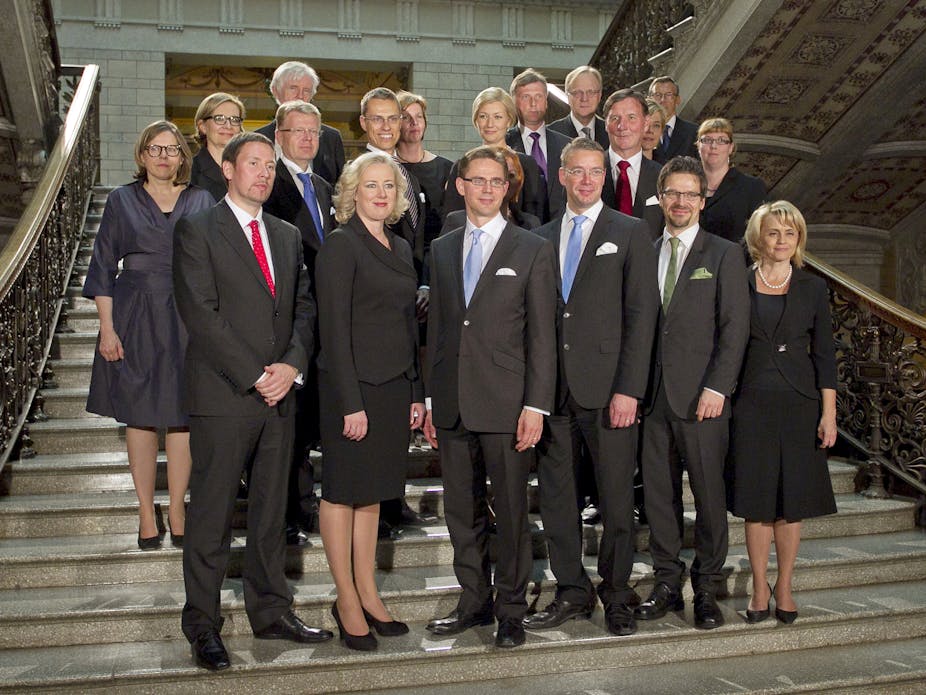Interest in this year’s European Parliamentary elections has been growing steadily: citizens’ groups and political organisations started organising election panels and public debates by January – several months earlier than in 2004 and 2009 which suggests this May may see a stronger turnout than in 2009 when only about 40% of eligible Finns voted.
The Finnish public now seems to consider European affairs to be more important to them than in the last decade. They are interested in the EU economy, but also in the EU’s global role and activities in foreign policy.
Candidate lists, this time around also feature a number of very prominent politicians. There are three current ministers running and 40 of the 160 candidates nominated by the parties are members of the Finnish parliament, including Miapetra Kumpula-Natri (SD) who is the chair of the Finnish parliament’s Grand Committee responsible for EU affairs.
Finnish EU elections use “open” party lists which means that MEPs are nominated by their political parties but elected according to how many actual votes they receive individually – so the EU elections are coloured primarily by the candidates themselves. The majority of election debates involve candidates from different parties rather than any single political tendency.

Even so, the major political parties have provided us with some indication of their priorities. The Social Democrats’ 2014 campaign slogan is the slightly dilettante-ish: “We support you” suggesting that, (unlike other parties, they imply) the SD is not on the side of banks or the bureaucracy, but rather the people. Their website also includes a questionnaire through which one can find the answer (in percentages) to the question: “How much of a Social Democrat are you?”
The National Coalition Party’s campaign headlines have focused around the issue of employment and a disdain for complaining (presumably pointing a finger at the opposition Centre Party.) Slogans ask the voter to think about how “a better Europe is born”. The party has already filled in some answers: a better Europe, it believes, comes “from work,” “from solving problems” and “from a love of peace”.
Meanwhile the main eurosceptic, The Finns (in Finnish their name reads as “Average Finns”) wants “less Europe; but a better Europe”.
One campaign poster draws a parallel between a candidate and Marilyn Monroe. But Finland has so far managed to avoid the omnipresence of large PR firms that dominated the 2009 campaign, such as the Green Party’s posters where its candidates were dressed to look like particular Hollywood movie stars.
Breakthrough candidates
The two breakthrough candidates so far in this election campaign have been the Social Democrat MEP Liisa Jaakonsaari and the National Coalitions’ minister for EU Affairs and Foreign Trade, Alexander Stubb who have both achieved high visibility through nationally televised Saturday night variety shows.
Stubb’s semi-permanent grin and his general positive can-do attitude may have made him the butt of a few jokes, but his ability to laugh at himself will have also won him a great deal of support. Both of these politicians look very comfortable in their own skin – and more than that – Jaakonsaari and Stubb have come across as both smart and knowledgeable about EU politics, which has gone down well with the Finnish public.

Other prominent candidates include the National Coalitions’ Henna Virkkunen, the minister for public administration and local government, and the Finns’ candidate, Sampo Terho, who has written much on European affairs and is campaigning hard in pre-election debates.
Key domestic issue
Part of the reason for the large number of serving national politicians standing in these EU elections has to do with Finland’s national electoral cycle. The current government has one year left of its four-year mandate and the prime minister, Jyrki Katainen, has announced he will step down in July and accept instead a position in Brussels – presumably as the Finnish Commissioner, or another key EU position.
The current finance minister, Jutta Urpilainen, is also facing a contest for her position as leader of the Social Democrats and has said if defeated she would resign her portfolio. So, with the three ministers vying for seats in Brussels, the current government could lose as many as five of its 17 ministers after the European elections, which adds also some concern in many voters’ minds.
People are more interested in these EU elections than in any over the past decade. But they are also wondering if their sitting government isn’t perhaps playing a game of “ding dong ditch” around the European elections; as in the childrens’ game where players go up to a chosen house, ring the door bell, but then run out of sight.

